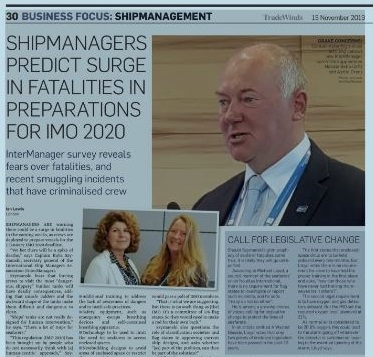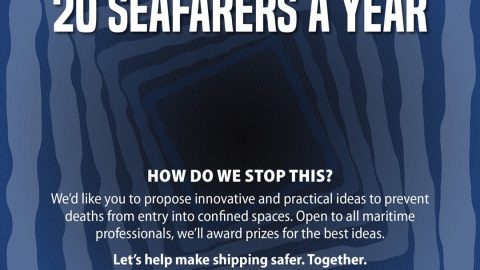Europe’s maritime safety agency has started to reveal the managers with a poor port-state-control record in its latest safety drive — and some of the bigger industry names have come to the fore
The European Commission (EC)’s name-and-shame policy to identify poor-performing safety managers has thrown up some big names and substantial fleets.
From this year, the European Maritime Safety Agency (EMSA) — on behalf of the EC — has been compiling and publishing a list of the poorest-performing shipmanagers.
The list is the latest move in the risk-profiling of managers and vessels being drawn up by the major port-state-control (PSC) authorities in an attempt to improve targeting and safety in the industry.
The EMSA list is based on port-state-control records and comprises those companies responsible for International Safety Management (ISM) of ships.
Data is taken not only from the Paris Memorandum of Understanding (MOU) PSC authority but also from the Tokyo MOU and US Coast Guard.
EMSA is ranking ISM shipmanagers in three separate categories that chart their PSC performance over a 36-month period. This includes the worst-performing managers listed in the very low category, then low or very low and, finally, low performers.
Describing the rationale behind the list, the EC directive stated: “To be listed on the lists of low and very low-performing companies, the company should have demonstrated a level of poor performance for a continuous period of 36 months directly preceding the publication. A consistently poor performance for such an extended period demonstrates an unwillingness or inability on the part of the company to improve performance.”
The very low section is made up of over 80 organisations, mostly small general-cargo or reefer operators. But it appears it does not take too many slip-ups in terms of detentions and deficiencies to make it onto the list.
The section includes companies such as Istanbul-based Makro Denizcilik, an outfit with two handysize bulkers on its books — the 34,000-dwt Infinity (built 1985) and 33,000-dwt Eternity (built 1989). Just one detention over the past three years and a handful of deficiencies were enough for it to be included in this section.
Another example is Ukraine-based Pic Shipping, which is also included in this category after one of its two ships, the 8,750-dwt Vikki (built 1985), picked up detentions in every one of its past seven inspections.
But it is the list of low-ranking performers that the larger fleets and more familiar names start to appear, such as Vietnamese shipping company Vinaship JSC, which manages a fleet of 14 bulkers and general-cargo vessels. According to Equasis, the company’s fleet has actually picked up only one detention in the past three years — that of the 27,841-dwt Vinaship Sea (built 1998), which was detained with 10 deficiencies in India in January.
Italy’s BNavi Shipmanagement also makes it onto the same list. The company provides ISM management for a fleet of 11 ships and has picked up three detentions in the past three years — including the 48,000-dwt Arundel Castle (built 1997), which was detained in both Lithuania and Italy last year.
Other familiar names include South Korea’s Samsun Logix Corp and its managed fleet of eight ore and bulk carriers. The company has only chalked up one detention in the past three years — its 149,000-dwt capesize Boryeong (built 1993) was detained in Vancouver for two days in 2011.
Japan’s private shipping companies also make it onto the list, including Kyoei Shipping and Yano Shipping. Ehime-based Yano controls a fleet of eight — nearly all modern — bulkers and has picked up two detentions in the past three years. This includes the 46,232-dwt CB Adventure (built 2002), which was detained in Port Headland, Australia, last year.
From last month, the Tokyo MOU also introduced a new risk-based inspection regime centred on the past performance of the managed fleet and risk profile of the flag and classification society under which the vessel is registered.
Tokyo MOU uses the criteria to determine which ships should be inspected. To qualify for a low-risk rating, vessels must demonstrate a detention per inspection ratio better than 5.16% and a deficiency per inspection ratio greater than 4.01%.
To see the full list, visit: https://portal.emsa.europa.eu/web/thetis/company-performance
For more maritime news see Tradewinds


